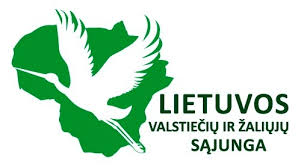Lithuanian Peasant and Green Union on the verge of power

The Peasant and Green Union (LVZS) party are neck-and-neck with the centre-right in the battle to be the biggest party in the Lithuanian parliament.
Of the 70 seats allocated on a national proportional basis, LVZS have won 19 to the main centre-right party’s 20 and the centre-left’s 13.
This is a huge increase in support from the last parliamentary elections in 2012, where the LVZS won just one seat with 4% of the vote.
The second half of the parliament’s seats will be allocated on October 23, elected in single-seat constituencies, similar to Britain’s general elections.
Preliminary results in these constituency elections suggest that LVZS and the centre-right are neck-and-neck, with LVZS ahead in 21 and the centre-right ahead in 22.
The leader of the LVZS has said he would be prepared to form a coalition with both the centre-right and centre-left.
The leader of the centre-right on the other hand, has said a coalition with the centre-left is “hardly possible” and he would rather work with LVZS and the smaller centre-right party, the Liberals.
The ruling centre-left party has suffered from scandals and the introduction of a new labour code, which makes it easier to hire and fire employees.
According to Bloomberg, the LVZS campaigned for less red-tape and a more technocratic government.
Rebecca Harms, the president of the Greens in the European Parliament, tweeted her congratulations to the LVZS, which is a member of the Green European group although the LVZS is thought of as centrist whereas the European Greens are more left-wing.
The LVZS was formed as the Peasant and New Democratic Party Union in 2006, named after a pre-war centre-left political party. It changed its name to include “Greens” in 2012.




Wow! Thanks for this article, Joe. How on earth can other former Eastern block countries do so well with their politics??? I am nothing less than jealous. Spare a thought for us in the Visegrad 4.
I thought there was a separate Lithuanian Green Party (Lietuvos Žaliųjų Partija http://www.lzp.lt/)? Do you know how they relate to one another?
There is definitely a separate Lithuanian Green Party, who polled 1.94% of the votes cast, not enough for any list seats. However, their MP, Linas Balsys, might be able to retain his seat in the second round of voting for single member constituencies.
They do not relate to each other all that well, since LVZS’ commitment to green politics is not that strong and mainly derives from its main interest of standing up for rural voters and farmers.
Thanks Alan.